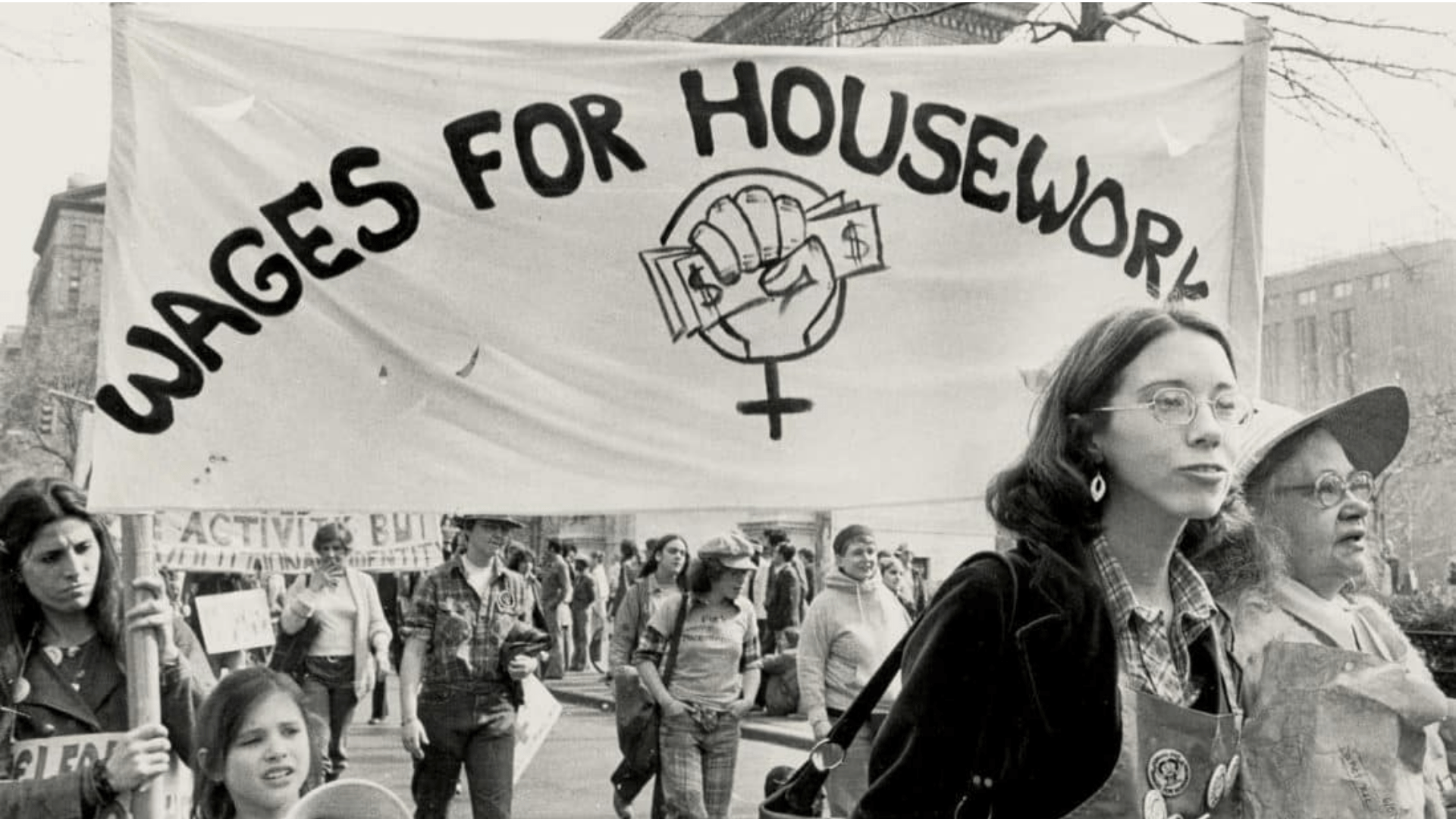Gender is an analytical and structural category around which economies and societies are organised historically. In particular, gender that evokes a power relation is a social structure of accumulation in a Post-Fordist, flexible mode of the capitalist production economy. Women folk are a heterogeneous community characterised by caste, class, sexuality, ethnicity, race, ableism, shape and size etc., who are all treated as second-class citizens in their societal context.
Colonialism has had a role to play in this regard. The essence of women takes birth before their existence in this world which is built and sustained primarily by their invisible labour that is devoid of measurement and price. Women’s role in the economy is immense such that their contribution should be rightfully deemed as ‘essential’ work in running the engine of an economy, especially the capitalist economy.
The institution of patriarchy (Brahminical patriarchy) and capitalist economy rests on the social reproduction, i.e., unpaid labour of women, without which these institutions wouldn’t be functional to make profits and sustain. The control over women’s bodies is an instrument through which essential work is extracted for free, either in the garb of love, duty, or shame. The clear dichotomy that is made to perceive between the institution of family and the market is to the advantage of the larger capitalist structure, which eventually rationalises patriarchal relations and exploits women.
The institution of patriarchy (Brahminical patriarchy) and capitalist economy rests on the social reproduction, i.e., unpaid labour of women, without which these institutions wouldn’t be functional to make profits and sustain. The control over women’s bodies is an instrument through which essential work is extracted for free, either in the garb of love, duty, or shame. The clear dichotomy that is made to perceive between the institution of family and the market is to the advantage of the larger capitalist structure, which eventually rationalises patriarchal relations and exploits women.
The family produces vital needs for the economy with disproportionate contribution by women in creating labour force and intangible social assets like trust to the economy (unpaid care). The circular flow of income and expenditure in an economy starts with domestic labour undertaken by women within the institution of the family.
In this sense, the domestic sector does key value addition to GDP, which goes unaccounted for in its estimation. Therefore, this intersection of production and reproduction economies is deliberately invisible, and production economies are made to not acknowledge the quintessential nature of work in reproductive economies. This lack of acknowledgement has material repercussions in terms of access to resources for women as the persistence of domestic work as unpaid makes the labour market consider women as secondary workers.

The family produces vital needs for the economy with disproportionate contribution by women in creating labour force and intangible social assets like trust to the economy (unpaid care). The circular flow of income and expenditure in an economy starts with domestic labour undertaken by women within the institution of the family.
Labour markets are gendered in a sense as they reflect the existing domination practices, and these manifests in wages, skill, networks, kinds of jobs, and most important, organisation of production. Women in the labour market are largely employed in the informal sector due to the presence of domestic work that they are endured to perform.
In recent times, there has been talked of the feminisation of the labour force. Increasing labour force participation of women empowers is usually claimed. It is certainly true but to a small extent as it ensures accessibility to money and spending ability and that alone. But at a structural level, increasing female participation in the capitalist economy is to be seen critically.
In recent times, there has been talked of the feminisation of the labour force. Increasing labour force participation of women empowers is usually claimed. It is certainly true but to a small extent as it ensures accessibility to money and spending ability and that alone. But at a structural level, increasing female participation in the capitalist economy is to be seen critically.
The process of feminisation that is profoundly visible in many countries and economic sectors is to be taken with a pinch of salt as there is not merely a correlation but causation between the flexibility of work (a Post Fordist mode of production) and the feminisation of labour force which hinders empowerment and closes doors for any kind of rebellion or revolution. It is equally important to understand the composition of the workforce in these feminised industries or sectors as it reflects the fact that capitalist accumulation uses the existing social structures of caste to dispossess and accumulate.

So, the high representation of women in informal markets (labour market and structure of contract) increases overarching patriarchal power on women’s responsibility. These questions can partially be addressed with macro-economic policy management.
First, it is significant to understand that statistical measurement is rooted in the social context and therefore does not provide the gender reality fully. The circular flow of income and expenditure that is constantly in motion is based on women’s work that is not measured and paid, and therefore GDP doesn’t include domestic labour as economic activity.
The process of feminisation that is profoundly visible in many countries and economic sectors is to be taken with a pinch of salt as there is not merely a correlation but causation between the flexibility of work (a Post Fordist mode of production) and the feminisation of labour force which hinders empowerment and closes doors for any kind of rebellion or revolution. It is equally important to understand the composition of the workforce in these feminised industries or sectors as it reflects the fact that capitalist accumulation uses the existing social structures of caste to dispossess and accumulate.
The statistics are flawed in this sense as not merely the domestic labour but home-based workers who are largely women also aren’t counted in labour and work statistics. There are underlying macro-economic policies which act as a detrimental force in recognising these nuances. Second, macro-economic policy is a lens through which we can see how women are looked at, as needy ones or essential ones.
Anything that is termed as social welfare is considered to be less important than those that are considered productive sectors. Policymakers make it to a point to sell a narrative that women are dependent and not productive actors. Domestic work requires no skill is a narrative that is sold.
Women absorb macro-economic policy shocks undertaken by the state, which shifts costs to the unpaid economy, say, for instance, due to a decrease in PDS provision, tax on sanitary pads, changes in recent labour codes, and provisioning of drinking water. Another tool considered a panacea for women’s empowerment is Self Help Groups.
SHGs require rethinking because micro-credit provisioning programs essentially make us not question the declining role of the state and make women responsible for meeting consumption needs despite the presence of monitoring and supervision that’s prevalent in that institution. It also sells the idea that being in debt is bad, and here it is important to understand that the capitalist economy finds it lucrative to shift costs to the unpaid care economy.
There are underlying macro-economic policies which act as a detrimental force in recognising these nuances. Budget, for instance, is a macroeconomic policy tool that can be used to address these nuances to make gender budgeting possible as it addresses gender inequalities. Any expenditure like investing in the provisioning of cycles for women can have tangible and intangible empowerment outcomes; provisioning of drinking water, for instance, was sanctioned by Mayawati (note, the crucial role of representation) during her leadership despite the World Bank programme was based on a community cost-sharing basis, with the sole intention to reduce time poverty that women especially rural marginalised women folk go through.
The budget is essentially a non-neutral document. Having said that, any intervention, be it research or policy, needs to be questioned as they all are embedded in power relations.
The idea that work is worship needs reflection because work is a historical category, but labour isn’t. In this context, the question of choice or survival for women needs some reflection. Surrogacy, sex work, domestic work, can we read this as choice or lack of fallback position?
The politics of language also requires constant and conscious assessment in our day-to-day lives. For instance, usage like ‘my maid’, domestic ‘duty’, sex work as ‘work’, surrogates’ womb’ as the machine (requires emphasis in India’s caste-based society), gold diggers, ‘nimble’ fingers, women’s ‘rage’ or anger, etc. needs rethinking and correction.
To resist is key though resistance is individualistic but individual resistance to structural inequalities is necessary, I suppose, for one’s own growth. The first institution that requires this resistance is the biological family. It is an institution that inhibits all of us from exploring any emotions, be it love, pain or even solidarity. To do this, I like to think that financial independence, though surficial, but extremely significant for women.
Also read: Women & Circular Economy: Mainstreaming Gender Equity For Sustainability
Money makes us question gendered norms that persist as a division of labour within the family. As long as the ambit of social reproduction, like cleaning, washing, care work, cooking, folding clothes, etc., is borne by women and women alone, it is extremely difficult to question structures that prevent us from being out of this arena.
Also read: Where Do Women Figure In The Indian Economy?
Featured image source: Monthly Review
Apurva dreams of a revolution in her lifetime.





